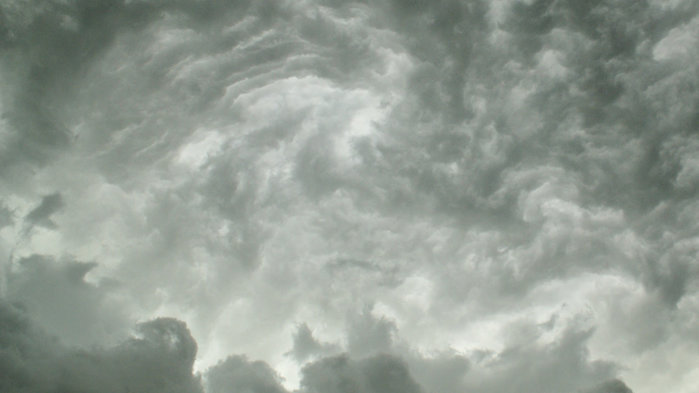Clouds and convection
Climate models disagree on how much global mean temperatures will rise in respond to increasing greenhouse gases. One of the key uncertainties responsible for this spread in modeled climate sensitivity is the representation of clouds and convection in global models. Global models include not only climate models, but also weather prediction models that are used for daily, weekly and seasonal weather forecasts.
In our group, we contribute to reducing this uncertainty by developing a better understanding of clouds and convection, of their dynamics and microphysics, of their interaction with the large-scale environment, and how to better represent this interaction in weather and climate models. For instance, we study how clouds and convection interact with large-scale wind systems (the CloudBrake project), how clouds are (self-)organized, and how the microphysical and radiative properties of clouds depend on aerosols (ACTRIS).
A turbulent storm system over Gulpen-Wittem, The Netherlands. February 15, 2016 on the Cloud Appreciation Society website.
In many of our research projects we use ground-based remote sensing, such as radars and lidars that measure properties of clouds, aerosol, rain and wind. Our group is strongly involved in the coordination of the Ruisdael Observatory, a nationwide observatory for measurements of the atmosphere, which are combined with turbulence-scale simulations of the atmosphere to enable better weather and air quality forecasts.
Those simulations are performed with the Dutch Atmospheric Large-Eddy Simulation (DALES) model, which our group has long helped develop. DALES explicitly resolves turbulent motions on scales of a few 10-50 m, over domains traditionally on the order of 50 x 50 km2. But with increasing computing power the simulated domains are becoming larger (on the scales of the entire Netherlands) and are used in our group to study the properties of convective clouds, including stratocumulus, shallow cumulus and thunderstorms, and to make near real-time weather forecasts as part of the Ruisdael Observatory infrastructure.
